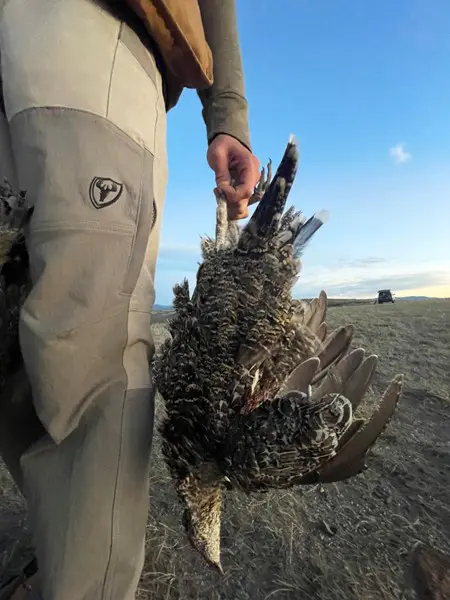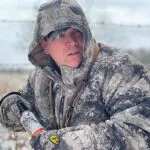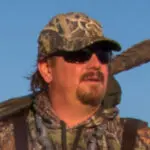Sagely scouting, perseverance, and a little luck score lifer birds for a crew of mountain country transplants
In reference to sage grouse hunting, I once read the adage, “he who walks the most wins”. And after topping 50,000 steps in two days without a single flush, my friends and I were losing.
Minnesota transplants with ruffed grouse expertise, we were hunting the greater sage grouse in the northernmost units of Colorado. Within these units the season is limited to a weekend and a total bag limit of two birds. So, the self-imposed pressure to find birds is high. Compared to the varied environment most grouse species inhabit, the sage fields populated by sage grouse are dizzyingly monotonous, which further amplifies the frustration of being unsuccessful. A chance encounter with some successful sage grouse old-timers and a game warden, however, left us with a few tips and assurance we were doing everything right, but had simply failed to get lucky. This offered some encouragement, but with the season drawing near on the final day of hunting, we still felt a bit lost and dispirited.
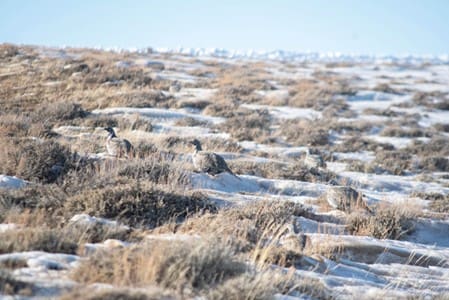
For the final hour of the season, we decided to stray from our original plan and hunt an area we had scouted the previous evening. While this spot contained all the right habitat combinations we had been told to look for, so did everywhere else we pushed through. Moving spots, however, offered the moral boost of novelty and relief from unsuccessful hunting for the short ride over. I just chocked it up to the learning curve and was already scheming for what we could do differently next season.
The final spot was a large bowl carved from undulating cretaceous seabed – trademark terrain for this region. The plan was to fan out and maximize our search area and descend the hillside. We parked on the rim and began spreading out with me being the furthest from the car. I had yet to reach my entry point when surprised by the familiar sound of grouse erupting. The frantic wingbeats were quickly followed by a volley of shots. I saw birds drop, others fly to the bottom of the hill, and, most importantly for me, a single bird crossing the rim of the bowl and landing. Running on autopilot, and against the teachings of firearm safety instructors, I sprinted towards the lone hen. After getting within effective striking distance of my father’s 1984 12-gauge Remington 870 Express, I aimed for the ground-laden bird’s head and fired. The bird took flight. I fired again. The bird flew again. There was not a single change in the bird’s trajectory towards the bottom of the bowl…and it flew out of view. I felt confident in every shot, but these feelings were instantly replaced by the humiliation of missing an easy shot. Maybe next season…
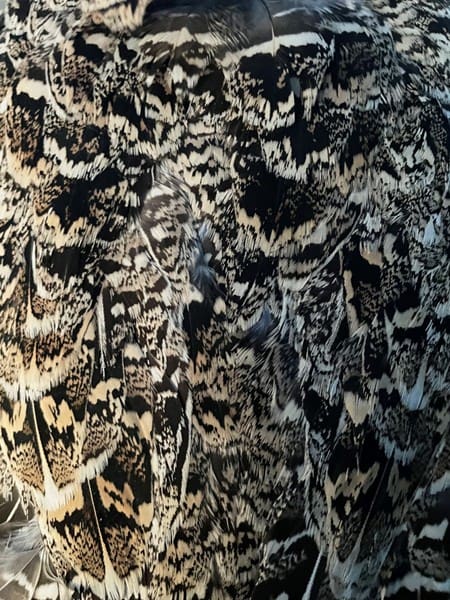
Dejected, I peered over the rim and was instantly struck by a rush of dopamine. At the bottom of the slope was a mortally wounded bird. There’s a time sink that occurs in the moments between shooting a bird, watching it drop, and retrieving it. Obstacles such as young trees, briars, or water that would normally slow me are absent. I shoot and then suddenly I am holding the bird.
Whatever happened in the time between those two events did not exist. I was teleported to the sage grouse and clutched it in my hand. It would be difficult to think of a more perfect time in my life. I was standing on the foothills of Colorado’s 13,000-foot mountains, in the last hour of a short season with some of my closest friends, holding a majestic creature that had obsessed us since moving to mountain country.
The details of what happened next are hazy at best due to the natural high of success. We located the three birds my friends had brought down and made a half-hearted attempt to find the rest of the covey. Whether we shot more birds didn’t really matter. We were already successful in our relentless pursuit of sage grouse, plus the covey was composed of all hens of a species that has seen tragic population declines. With this in mind, we celebrated the four in hand and forgot about the other dozen in the bush.
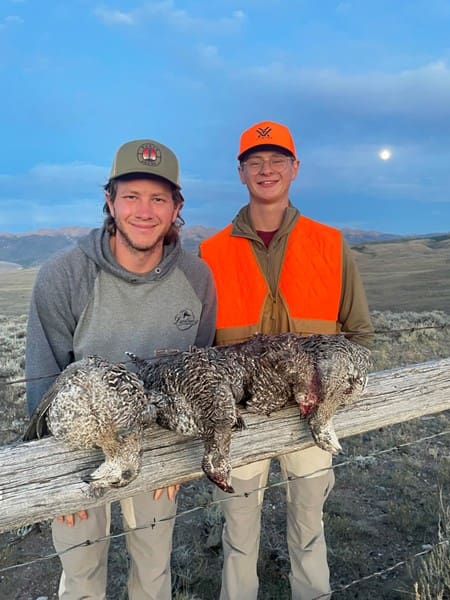

Shield Field Brush Pant FEATURES:
- Lightweight polyester double weave fabric for strength and 4-way stretch for comfort
- Nylon overlays on the front thigh & leg as well as the lower back leg for durability in the field
- S3® anti-microbial finish prevents odors
- DWR treated to repel moisture
- Four storage pockets & two knife pockets with nylon binding for durability
- Side seam vent zips allow for temperature regulation
- Elastic detachable suspenders with silicon grip
- Articulated knees for mobility
MSRP $149.99
